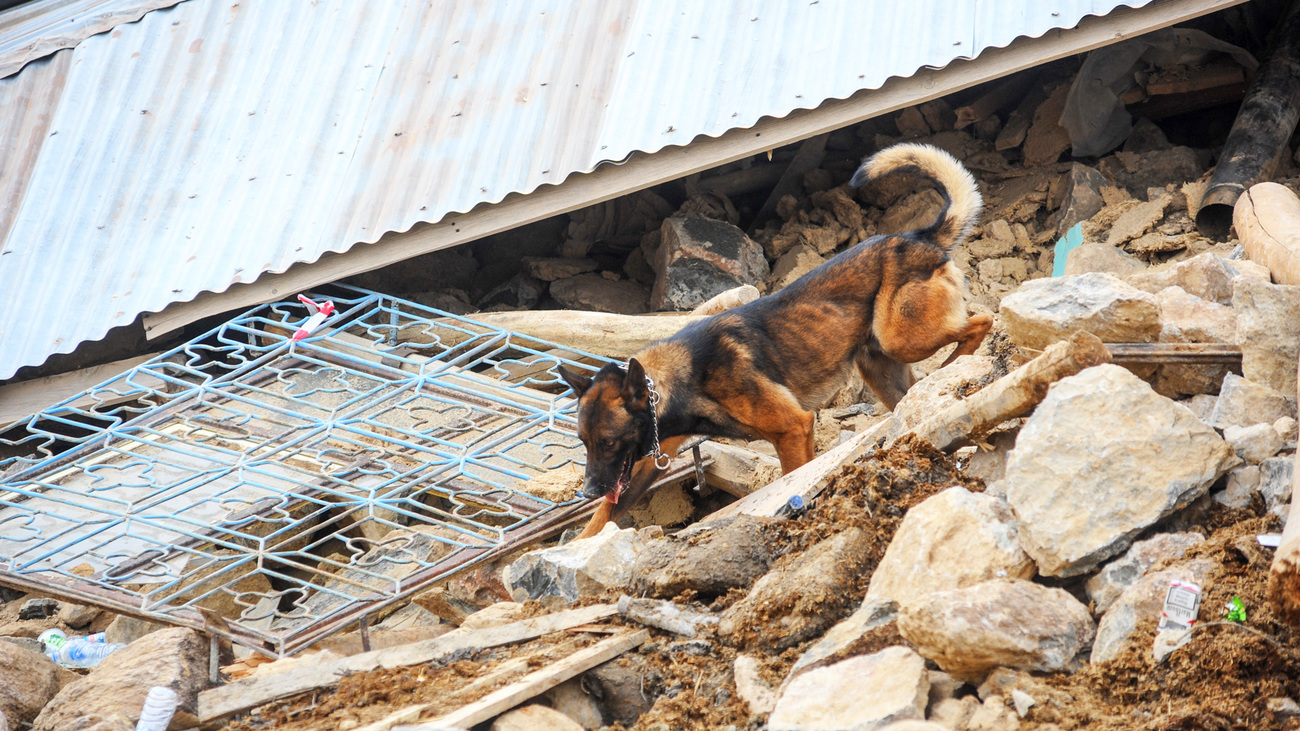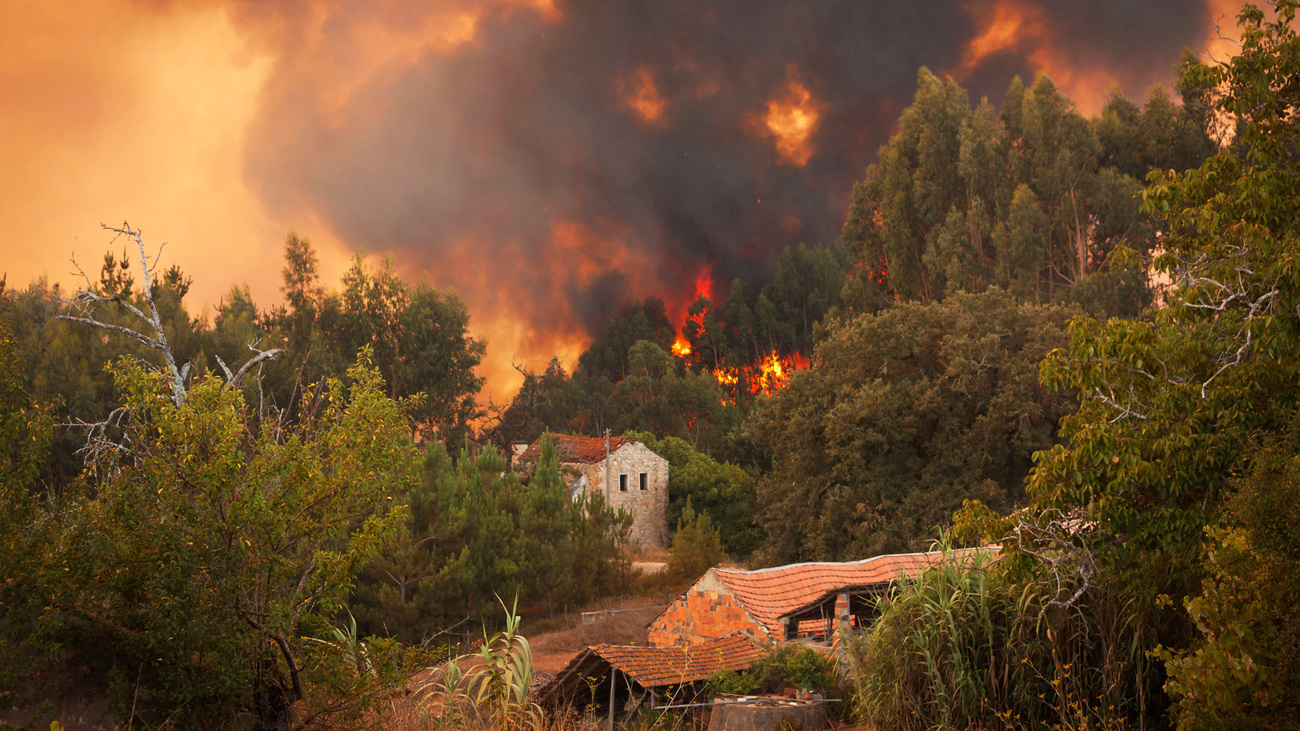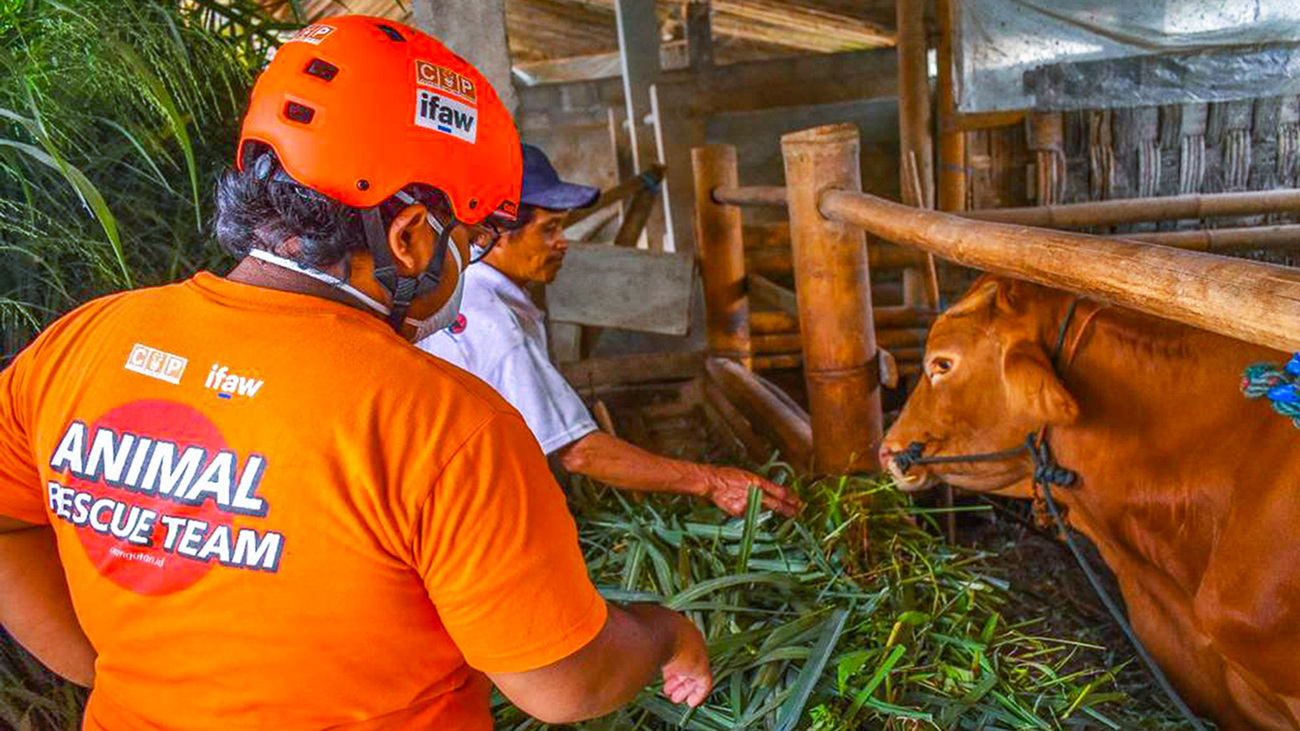Updates
How IFAW has helped animals and people during the Ukraine crisis
Learn more
Disasters impact the lives of animals in many different ways, from instantly causing injuries and fatalities to degrading their habitats and causing human-wildlife conflict, as some animals flee to densely populated human communities. While many disasters are unpredictable, humans have the ability to prepare ourselves—and animals—so we’re ready when disaster strikes. We can also work to respond to these disasters and rescue animals that are injured, sick, or stranded.
Earthquakes can be devastating for animals. They may trigger tsunamis and landslides, which can damage habitats as well as cause injury and death. Animals living in human-populated areas may also be buried under rubble from collapsed buildings.
Earthquakes can even impact animals that don’t live on land, such as whales. Because earthquakes produce some of the loudest underwater sounds on the planet, whales may experience hearing damage, displacement, and changes in behaviour. This poses a threat as whales rely on underwater sound for communication, detecting prey, and navigation.
Though many animals can take cover under rocks or bury themselves in the dirt, many others cannot outrun wildfires.
Fires have a significant impact on wildlife. Even if they survive smoke inhalation and burns, habitat loss threatens animals in areas affected by wildfires. While fleeing a fire, animals are also exposed to other dangers, such as collisions with vehicles. They may face conflict with humans if they end up in a densely populated area.

Called hurricanes in the Atlantic and typhoons in the Pacific, tropical cyclones, while predicted by weather forecasts, can be difficult to prepare for. Flooding, which is often the result of hurricanes, is the most common disaster in the world, and it can leave animals stranded, in danger of drowning, or separated from their human or animal families. Young wildlife may become orphaned, which impacts their chances of survival.
The rains and strong winds can also severely damage or destroy buildings, which includes animal shelters. In fall 2022, Hurricane Ian struck Florida in the US and destroyed the structures of many sanctuaries, including Little Bear Sanctuary in Punta Gorda, leaving 200 animals without shelter and supplies.
Severe storms can also cause habitat loss for wildlife. Uprooted trees pose a clear threat to species that live in them, like many birds, and trees and shrubs also become stripped of the food sources they provide for some animals. In February 2022, Storm Eunice caused wind gusts up to 196 km/h (122 mph) and impacted the United Kingdom, the Netherlands, Belgium, France, Denmark, and Poland.
As the climate changes, storms are increasing in unpredictability and intensity, which makes it more difficult to prepare shelter, animal food, and veterinary services.
Animals can be killed by lava flows, pyroclastic flows, tephra falls (falling rock), atmospheric effects, and gases. Volcanic eruptions can also trigger earthquakes and wildfires, which can kill animals and destroy the habitats of survivors. Eruptions themselves can destroy plant life, on which many animals may rely for food or shelter. Famine as a result of eruptions can cause more fatalities.
As an example of how devastating a volcanic eruption can be for an ecosystem, the eruption of Mount St. Helens in Washington, US in 1980 killed an estimated 11,000 hares, 6,000 deer, 5,200 elk, 1,400 coyotes, 300 bobcats, 200 black bears, and 15 mountain lions.
Following the eruption of Mount Merapi in Indonesia, local communities struggled to find fresh grass for their farm animals, as most of the ground became covered in ash.
Volcanic eruptions can also impact aquatic animals, as they can cause an increase in acidity and turbidity as well as water temperature changes. These effects can kill smaller aquatic animals that are the prey of larger animals, cutting off their food supply.

War and other human conflicts unfortunately spill over into the natural world, impacting landscapes and wildlife. Conflicts also affect pets and other animals in captivity.
According to research that analysed decades of wildlife population trends in Africa, the most important predictor of whether a species will flourish or perish is the presence of human conflict. The use of chemicals and landmines can have devastating impacts on habitats and kill animals directly. Conflict can also cause an increase in unsustainable hunting and poaching, both for food and to raise funds. This is heightened by an increased availability of small arms. Naval exercises impact marine animals and have been known to cause mass strandings of whales and dolphins.
Food shortages caused by conflict also result in farm and companion animals being euthanised because owners could no longer feed them. During many conflicts, companion animals are also abandoned or become lost when people are displaced from their homes.
Throughout ongoing conflict in Ukraine, hundreds of thousands of animals—pets, farm animals, captive animals, and wildlife—have been in need. Many refugees escaping to neighboring countries brought their companion animals with them, but others have been found abandoned. A large number of wild animals needed rescue and evacuation, having been abandoned in backyards by private owners or having had their habitat impacted by continued shelling and the placement of landmines.
There are many ways we can help animals affected by earthquakes, wildfires, storms, and other disasters. For one, we can make sure our own pets, farm animals, and companion animals are prepared for any disaster to strike. Check out IFAW’s #DisasterReady resources to learn more.
Second, we can work to mitigate the effects disasters may have by building resilience within communities and landscapes. IFAW works with local governments, organisations, and communities to ensure that both humans and animals have a path to safety. We also train responders in every aspect of disaster preparedness and technical response, including search and rescue, temporary sheltering, and emergency veterinary care.
IFAW also develops animal rescue networks, consisting of thousands of strategically located partners, experts, and authorities across the globe to help respond immediately when disaster strikes.
Learn more about how we prepare animals and communities for disaster.
Every problem has a solution, every solution needs support.
The problems we face are urgent, complicated and resistant to change. Real solutions demand creativity, hard work and involvement from people like you.
Unfortunately, the browser you use is outdated and does not allow you to display the site correctly. Please install any of the modern browsers, for example:
Google Chrome Firefox Safari